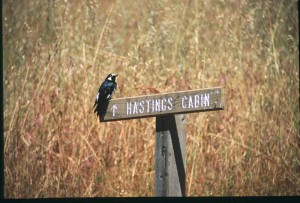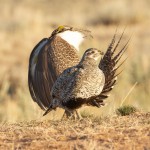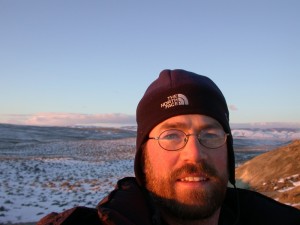The start of the Winter Quarter here at UC Davis has seen a veritable flood of great people from my Alma Mater (Cornell).

Acorn Woodpecker at HNHR in Carmel Valley.
First, my PhD co-advisor Walt Koenig came up and gave a talk in the Animal Behavior Graduate Group Friday seminar. Walt and I overlapped at Berkeley, but he since moved to Cornell. It was great to see him, and I was happy to help arrange his visit. We started with a wonderful dinner hosted by Sarah and Dan Hrdy at their almond orchard near Winters. It was really fun to visit with them again, and also to see Walt’s son Dale, who I had not seen since he was in junior high I think (he’s graduated from college now). Walt gave a great overview of the decades of work he has put into the cooperatively breeding acorn woodpeckers at the Hastings Natural History Reservation.
Last week a former professor of mine from Cornell gave the second ABGG talk in the series. Tom Seeley taught Bio 221- Intro to Behavior, which was a really influential class for me. I took it fairly late in my studies- up until that time I had enjoyed courses in organismal biology like Botany, Ornithology, and Vertebrate Morphology, but this was my first formal exposure to animal behavior. The course was team taught by several people in the department, many of whom I already idolized since their field-defining research had been featured in earlier lecture courses. The profs all brought such enthusiasm to the subject and covered so many interesting topics, I was hooked! My only regret was not taking this course earlier so I could have taken more that a single upper division course in behavior.
Tom gave a fantastic series of two talks on decision making in bees. On Thursday he spoke about how they decide on where to go when they need to find a new hive, and on Friday he described how the scout bees actually guide the whole swarm from its old home to the new one. It was very cool to see both of those talks together, and Tom did a great job of story telling to weave them both together into a narrative about how groups of animals can sometimes solve problems that they could not figure out by themselves. I think the faculty members in the audience especially appreciated his analogies to how university committees work (or don’t work, as the case may be).
I also was able to catch up with Andrea Townsend, a new hire in the Wildlife Fish and Conservation Biology department on crows. Andrea did her PhD at Cornell, and although we did not overlap, we share many friends in common and had run into each other at several meetings. She is hired as an urban bird ecologist, and I may pick her brain about possible future directions for research on turkeys.



